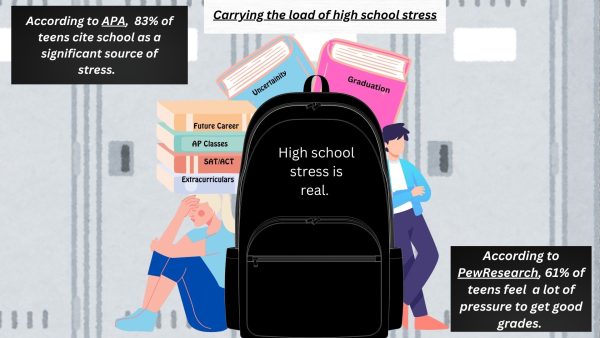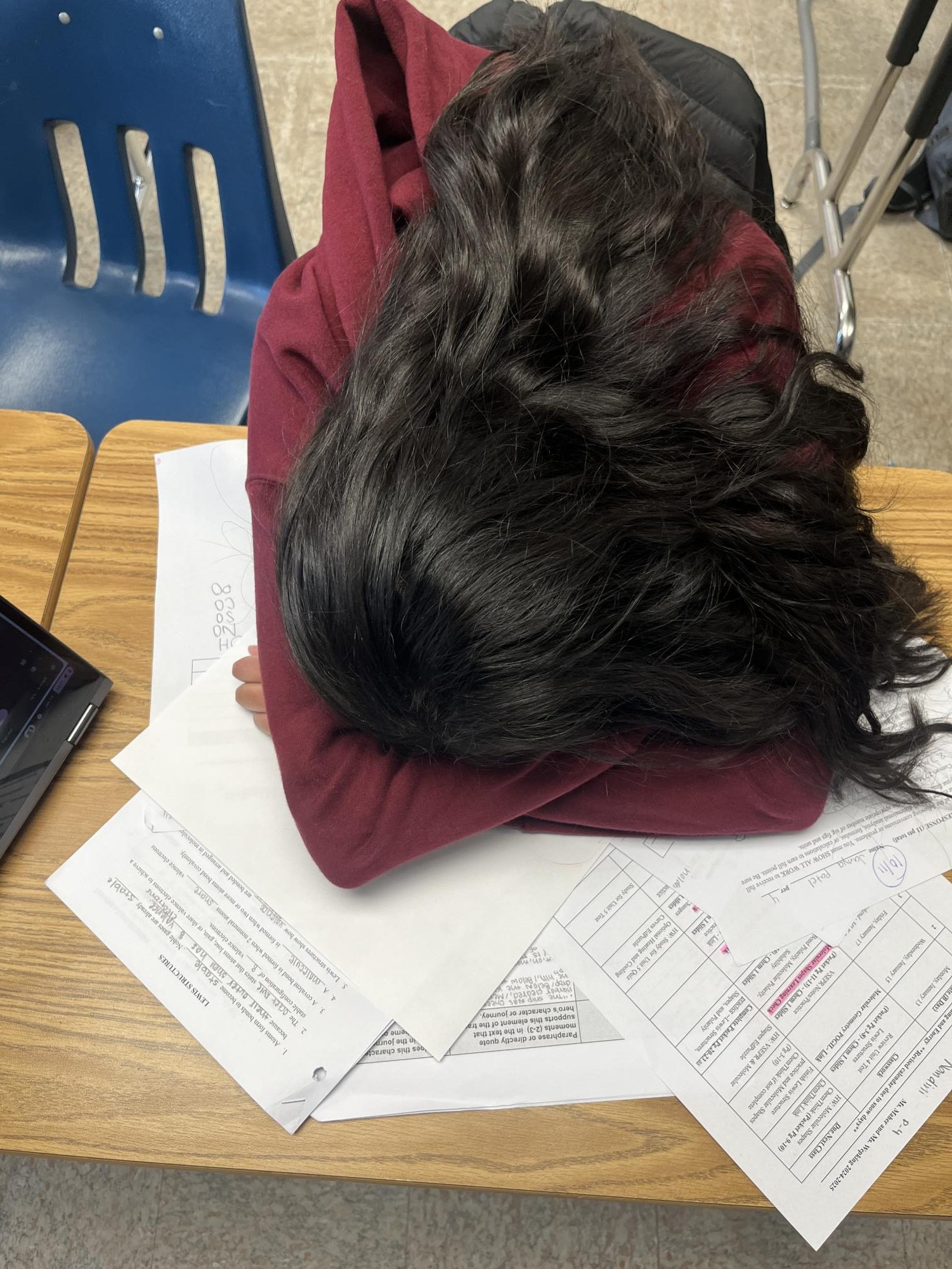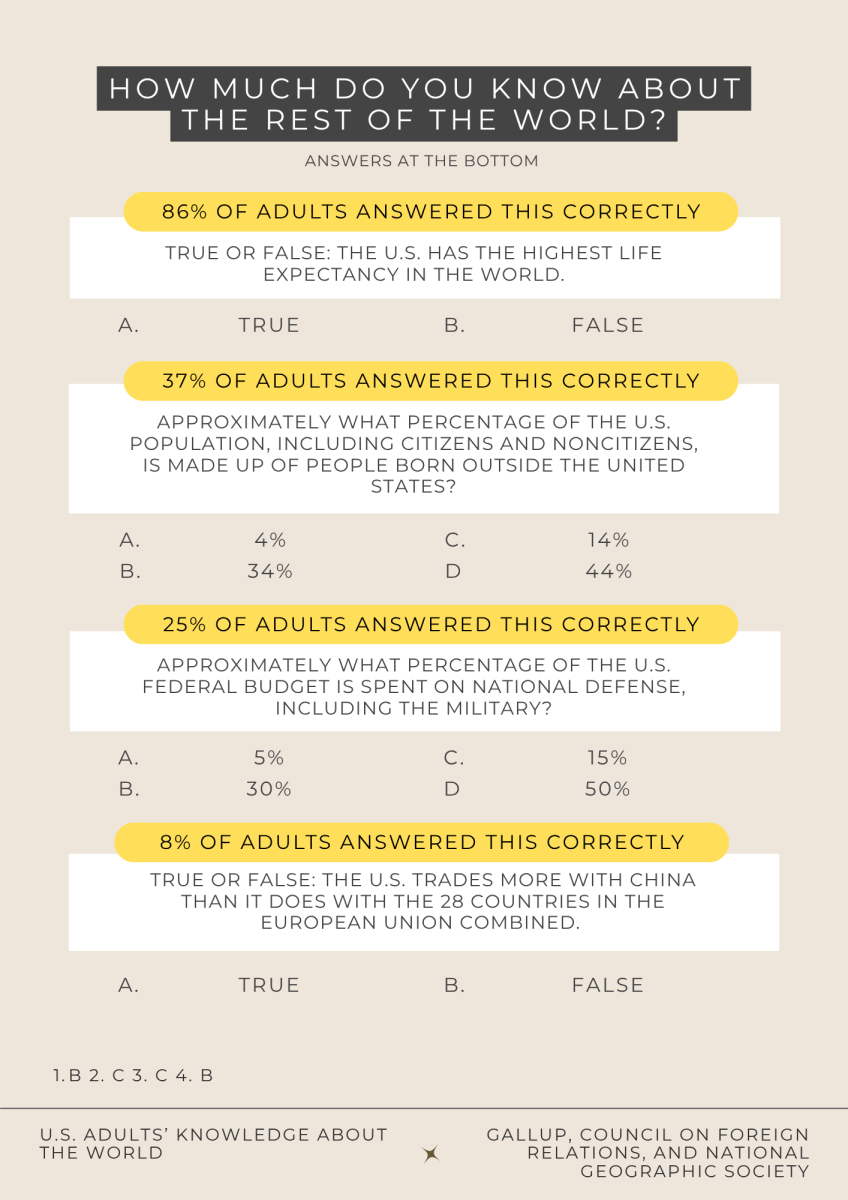High school is often called the “best years of your life,” but it feels like a persistent balancing act for many teens. Along with trying to discover who they are, plan for their future, and manage AP classes and standardized tests, high schoolers also struggle with a lack of downtime, leading to burnout.

According to the National Institutes of Health, adolescence is a key time for career identity formation, where teens make choices shaping their future. For many high schoolers, it can feel overwhelming, because most teens don’t know what they want to do yet. According to the Education Resources Information Center, many high schoolers struggle with insufficient information about themselves and their occupations, leading to difficulties in making informed career decisions. Students often feel as if they’re receiving conflicting information about careers which can cause confusion and make it more difficult for their decision process.
High school is a time when students feel the need to excel academically, and this constant push to perform can lead to significant stress. One major contributor to the stress is the heavy workload of AP classes. According to ChallengeSuccess, taking AP classes in subjects that don’t align with one’s interests can cause undue stress, limit participation in meaningful activities, and impact sleep schedules. However, for students who are passionate about the subject and prepared to commit time and effort, AP classes can be a worthwhile challenge. Balancing the demands of AP classes with other academic and personal responsibilities is no small struggle, and for many students, this balancing act becomes a source of pressure.
Another major stressor is the pressure to prepare for standardized tests like the SAT. These high-stakes exams contribute to emotional and physical stress, particularly during the weeks leading up to the test. According to the National Bureau of Economic Research, cortisol levels, a stress hormone, increase by 15 % on average during the week of standardized testing. This hormonal fluctuation can result in an impact on performance, with potential deviations in test scores of up to 80 points on the 1600-point SAT scale. The uncertainty of outcomes, coupled with the rigorous preparation required, can make standardized testing a challenging aspect of high school life.
Burnout is another significant challenge that students face. According to the University of Georgia, the constant push to perform academically can lead to emotional and mental exhaustion. This continuous cycle of studying, often with uncertain outcomes, can drain students, making burnout a difficult issue to avoid. Symptoms of burnout include feeling tired despite getting enough sleep, loss of confidence, and creating negative habits like staying up too late or stress eating.
The lack of downtime can only intensify these effects. According to the Cleveland Clinic, taking time to rest is essential for recovery and mental clarity, but many students neglect these breaks due to their focus on academic performance. Regular breaks can enhance focus, reduce stress, and support one’s overall health while improving learning and creativity. This absence of balance prevents students from recharging, leading to chronic stress and declining mental health.









